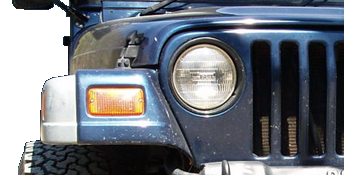OK I digested a good bit of that. I get that for X distance (shock travel) you need Y rate to hold it at Z position. As well as trailing arm/cantilever ratios. But:
I guess "the lightest possible spring" would in context of the performance you are trying to achieve, right? Like, it may hold up the load at 6" of uptravel, but that might be so soft that every corner you feel excessive body roll and every time you brake it's a nosedive. But the other things you mention - preload, bottoming on the dual rate stops and moving to the primary rate - that is the sort of stuff that will help with G's and roll and higher speed stuff. And I guess the link/suspension geometry plays a huge role as well.
Thanks - I understand the equation and how the combined rate "works", my head-scratch was more in regards to how guys are running setups with a combined rate of 85lb/in when my single coil setup with 160lb/in felt super squishy until I stepped up to 230lb/in springs - and it probably has more to do with COG, suspension design, etc
Good stuff guys, appreciate the lesson.
You want the lightest spring possible with 1-3” preload to achieve your desired ride height somewhat regardless of usage,
So that you can use the dampening for your benefit.
For most of our rigs with shocks mounted to the axle, the sprung mass is not much more than the unsprung mass. This makes it difficult to get the axle to droop bc the chassis above each axle and each axle has nearly the same inertia while moving.
It’s a battle to keep the chassis movement minimal while allowing the axle to move freely. To help force the axle away from the chassis, as fast as possible, hopefully faster than just free fall speed, you need preload.
Preload is getting the axle to full droop, dual rate stops aids that.
Rebound dampening slows that.
Light springs allows you to use the compression damping to actually do its job.
Think of it like this, would you rather use a long lever and fulcrum to jack up your vehicle to take the tires off, or would you rather use a hydraulic floor jack? Most would use the hydraulic jack.
Why use the springs to stop a bump event when a much better way is to use the hydraulic force of the compression dampening.
You can only get the dampening so light in the shock, while it’s easy to add more. This is why I want the axle to move as freely as possible via the springs used, and then control that with the shock dampening.
That’s the same reasons you tune the springs and preload first, get that to near 90% and then tune the shocks.
As far as suspension geometry it has some to do with it, but not usually enough to restrict movement. Typically with good joints in the links, even poor geometry wont inhibit free movement of the suspension bc of the heims rotating, and rotating on the bolts. Edit: there are of course anomalies with this.
Yes the geometry affects the dive/lift/squat/ pitch/roll of the vehicle, and having the wrong springs can band aid a problem. The same is true with valving.
The lightest springs to hold the vehicle at correct ride height with 1-3” preload is a good catch all for the majority of rigs. Sure there are anomalies but that is a great starting point for 90% of the stuff out there.
If it’s completely nose diving or body rolling in a turn, it’s going to be far worse in any bump event. The force is far greater in a bump event, than braking, accelerating, or turning.
If it is that bad for “normal” driving, it’s going to be exponentially worse in an actual event where the suspension is used. Just thing about the forces.
As far as hierarchy it starts with design geometry, building constraints, spring selection, then shock tuning.
For me, in my opinion, that is why it’s crucial to get the suspension geometry as good as possible from the start. Both with anti’s front and rear, and roll centers left to right.
Then build it as good as possible, get the springs as close as possible, and then the valving as good as possible. Put all the variables in your favor from the beginning. But that’s an argument to use a suspension calculator vs not, and that’s not for this thread.






